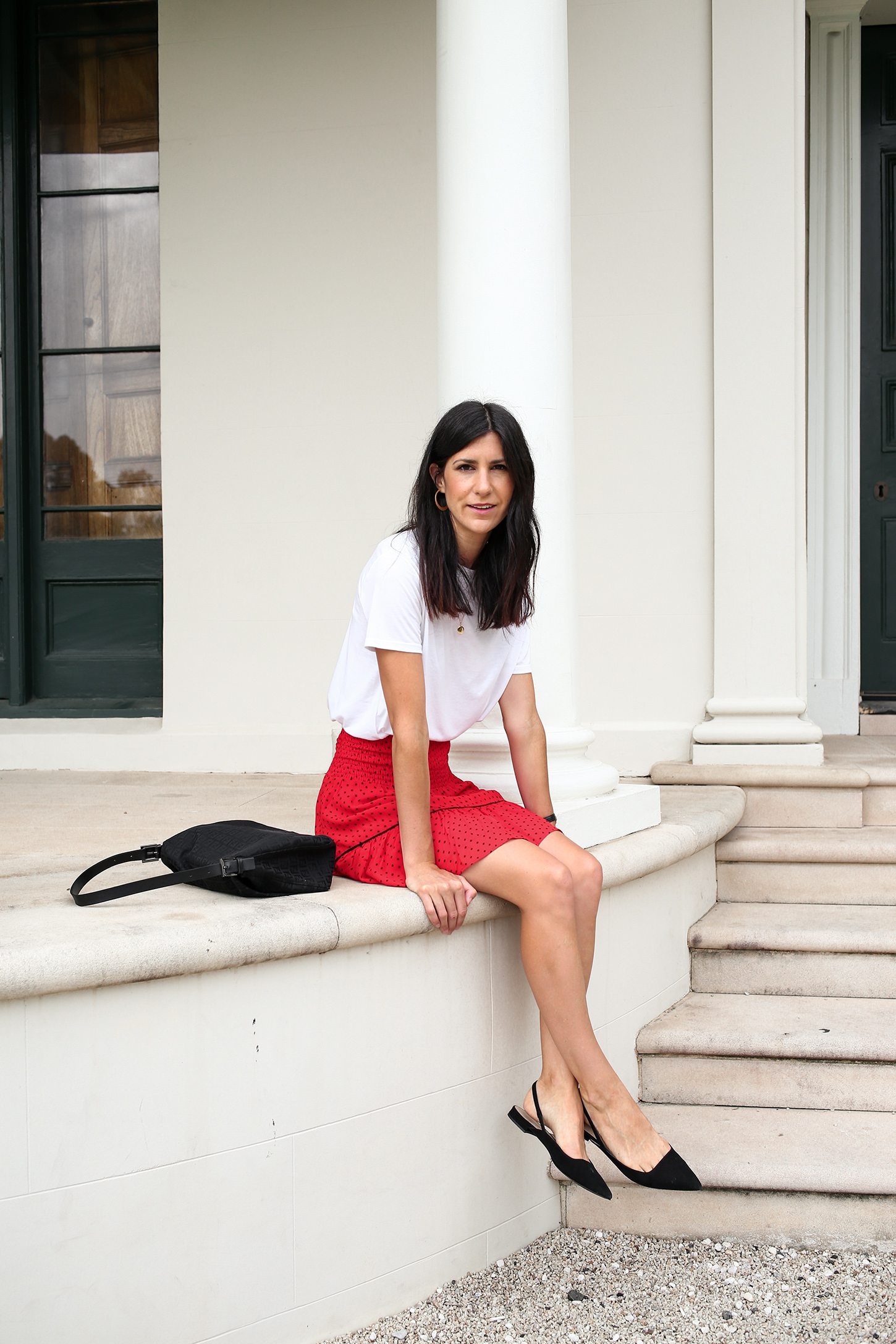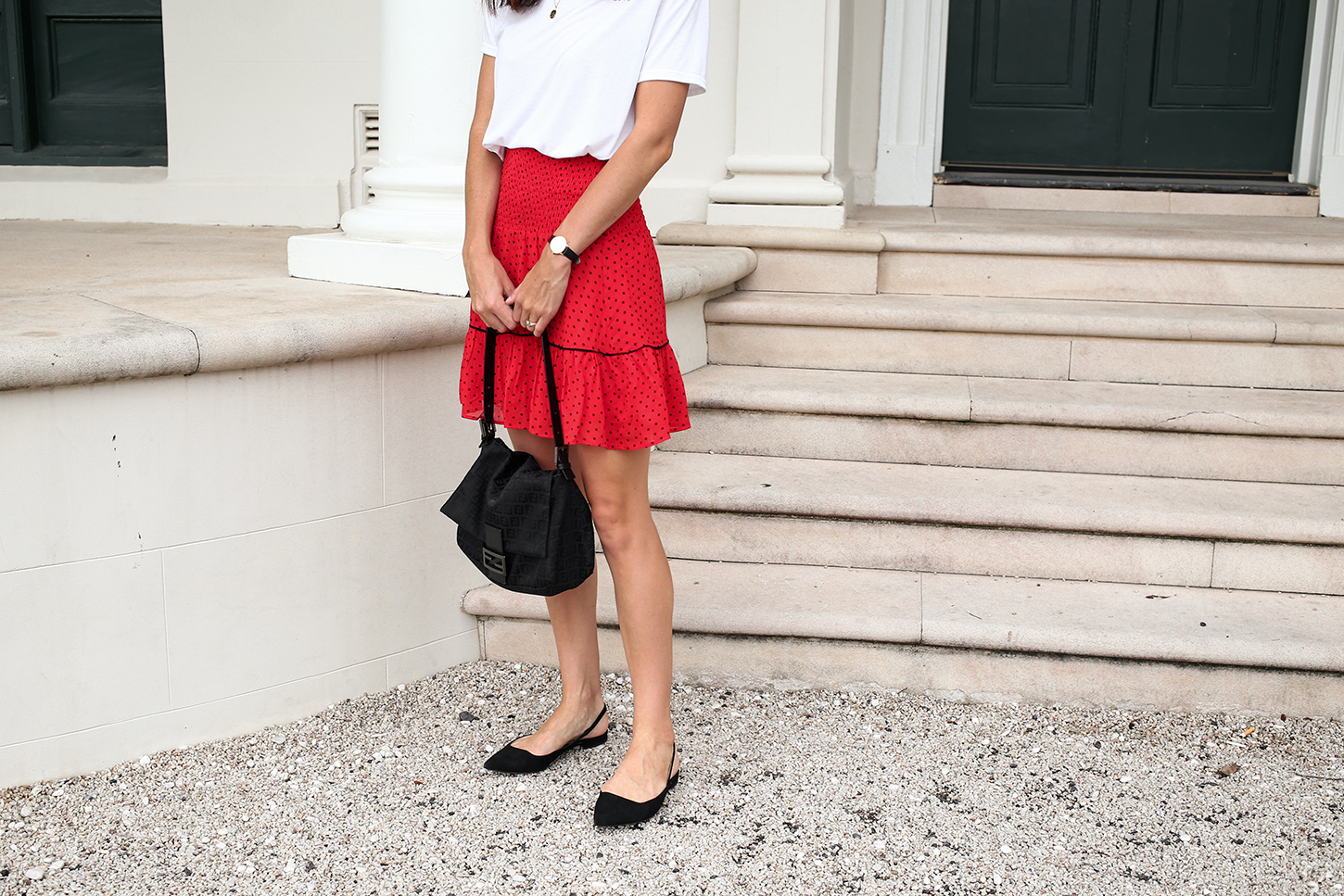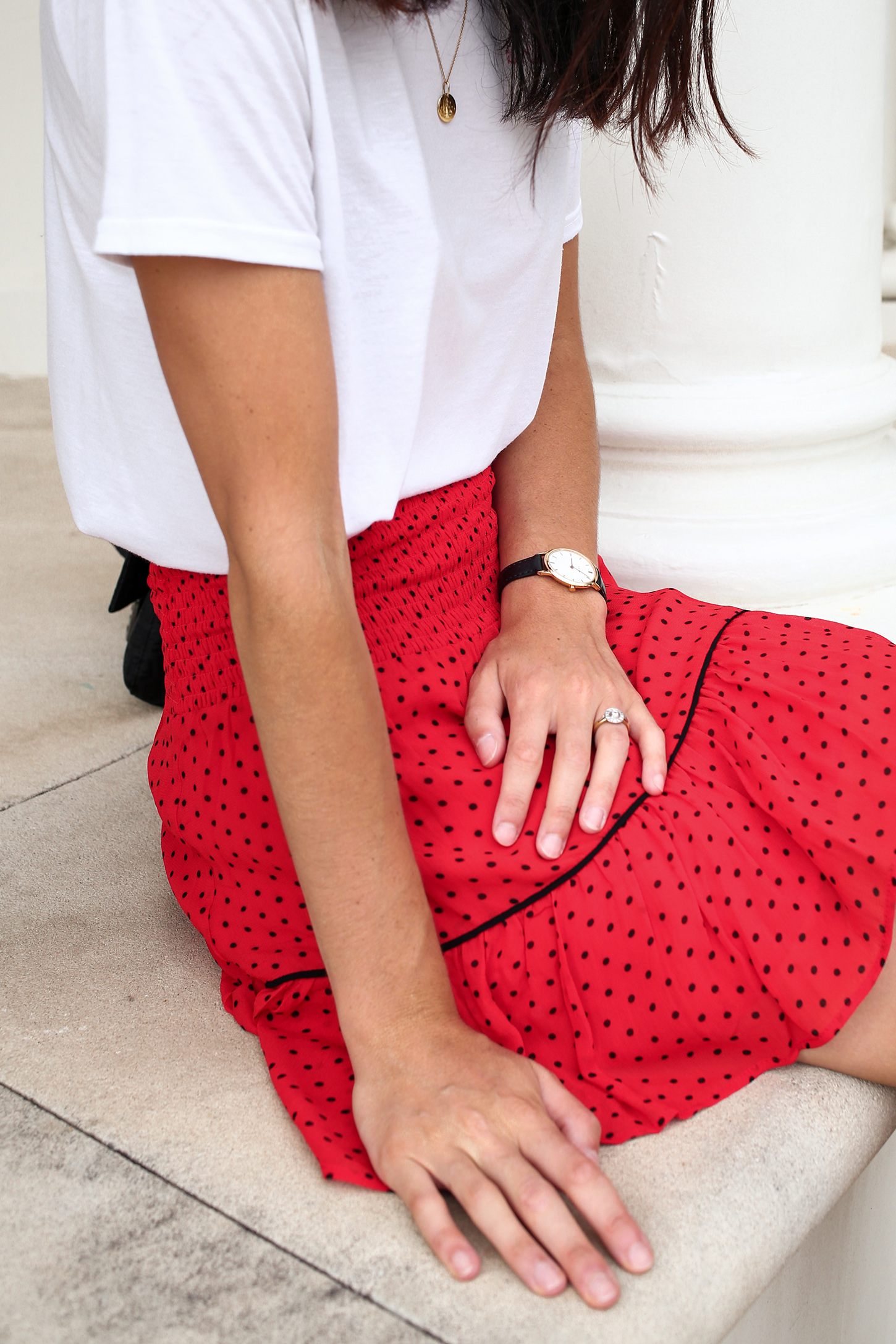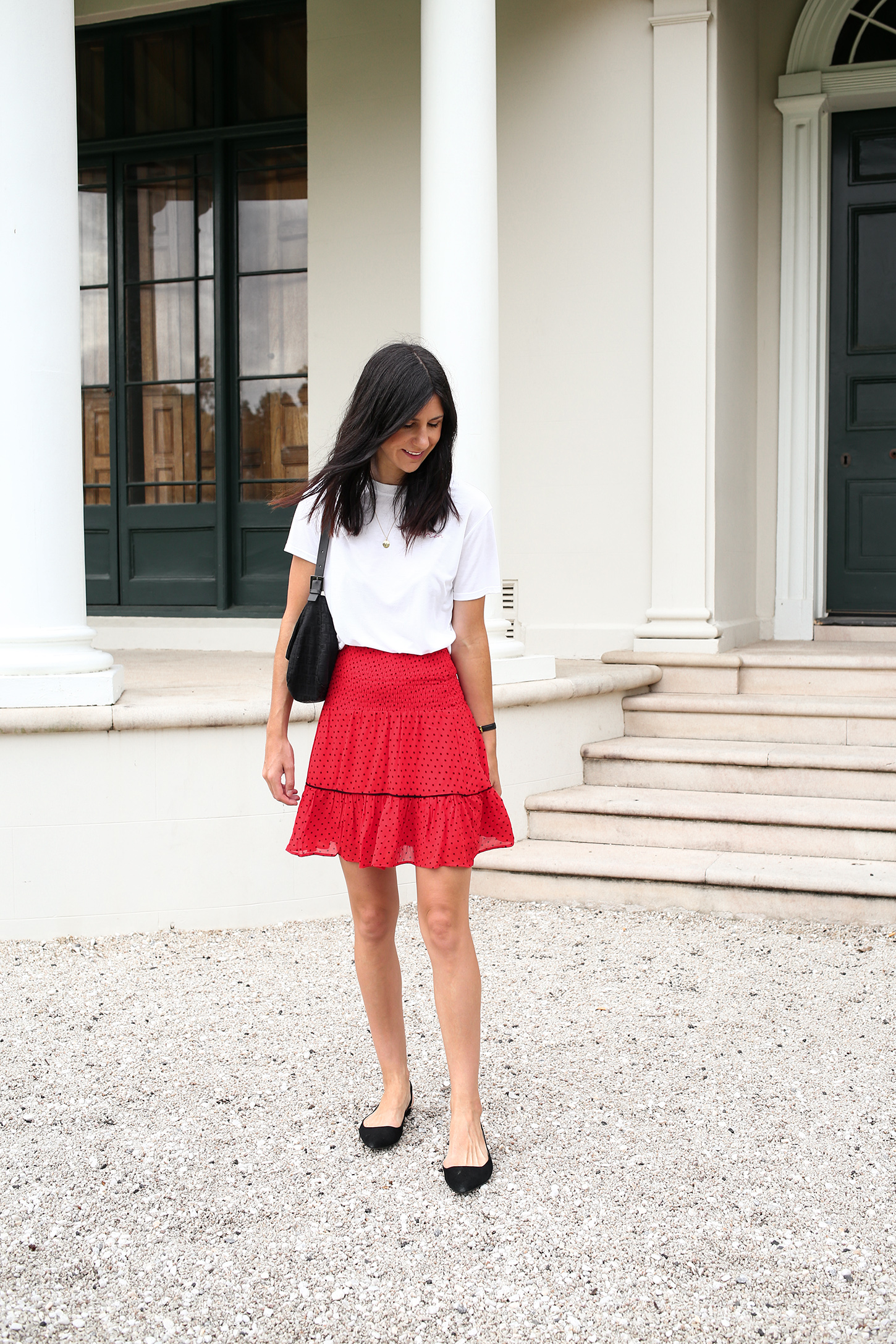




I think I first discovered the Five Piece French Wardrobe after reading Lessons from Madame Chic by Jennifer L. Scott. At the time, I was a bit of a francophile; I’d romanticised the idea of curating my wardrobe in pursuit of a French aesthetic, and subscribing to quality over quantity. Things I think when looking back, have really shaped my how I approach fashion, and guided my tastes towards more classic and timeless style choices.
Wearing Whistles ‘de rien’ t-shirt (old but similar here), Ganni skirt (P/L), All Saints leather jacket, Everlane editor flats (affordable option here), Mejuri necklace and earrings, Fendi bag, Linjer watch
After reflecting on the state of my wardrobe in 2017 and 2018, I made the decision to dive into the new year with a fresh mindset. While the quantity of items I was buying had decreased, I really I wanted to instil that same discerning attitude towards shopping I had many years ago. I’ve always been acutely aware that you don’t need a lot to feel or look stylish – something that’s drummed into a lot of the style advice I share – but I wanted to put that into practice more this year. Sustainability is very important to me, and despite the fact that a large part of the work I do is centred around styling, I thought it would also be a fun way to flex my creative styling muscles.
What is the Five Piece French Wardrobe Challenge?
The premise of the Five Piece French Wardrobe Challenge is simple:
- Only five pieces per season across spring/summer and autumn/winter
- Basics don’t count
- Accessories don’t count, unless they cost more than $200
- Bags and shoes do count



How I’m making the challenge work for me in 2019
Having done challenges like this to the absolute letter in the past, I’ve decided to re-work the ‘guidelines’ so they’re better suited to my own goals. Because the thing is this; they’re just guidelines, and if you’re trying to implement something new like this into your life, it should work with you, rather than against you.
I’ve added a fifth guideline that really supports how I have been shifting my purchasing preferences, and I’ve increased the total number of items I’m buying up to 20 key pieces across the year.
- Five key pieces per season (autumn, winter, spring, summer)
- Basics don’t count
- Accessories don’t count, unless they cost more than $200
- Bags and shoes do count
- Pre-loved items under $200 don’t count
My goal is to stay committed to the challenge across four seasons, starting with summer, and wrapping up at the end of spring (which according to Australian seasonal timelines, is 30 November).
What I’ll be buying
I’ve already invested in three of my five purchases for summer, the latest of which was this sheer cotton blouse from Nili Lotan (also here), which I’d previously loaned from PR to create some spring and summer content. The next purchase I have on the list, are the Saint Laurent nu pieds (also here), which I’ve been eyeing up for some time, and for my final pick of the summer, I have been looking at getting something a little more fun. On my radar is this Ganni top, or this beautiful floral skirt from Lover, however I’m trying to keep my options open. I love the idea of buying classic pieces but I also see the opportunity to really expand and enhance what I have with some striking prints or interesting silhouettes.
I’d love to know if you’ve also decided to do the Five Piece French Wardrobe challenge in 2019, and if so, what’s on your wishlist for the season ahead.


What do you define as basics? Probably like asking how long is a piece of string?
Author
I consider basics to be those foundational pieces of your style – generally what is on those lists of items you should have in your wardrobe. So this would include things like basic tees, work shirts/silk blouses, camisoles, basic mini/knee length skirts, blazers, simple coats, skinny or straight leg jeans, peg leg trousers, and simple court shoes, ballerinas, sneakers or sandals. If it’s a colour outside of my usual palette of grey/black/white/blush/navy/camel/denim then it’s probably *not* a basic. Ultimately it’s up to me to police how I handle this, and scrutinise those decisions (and also, the main thing which I haven’t said, is that I just want to shop less). The thing with challenges like this is that they’re guidelines so they’re open to interpretation by the person doing it. If you decide to do the 5PFW then you can always make them stricter or less strict depending on your own goals. I hope that explains it! 🙂